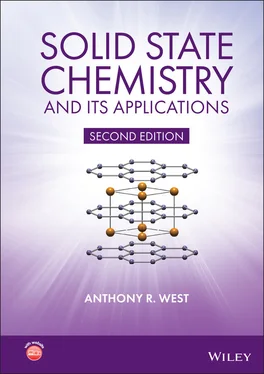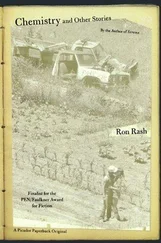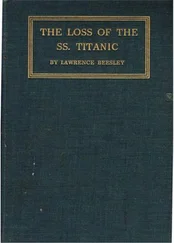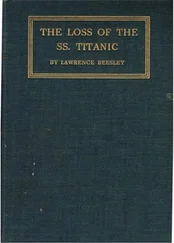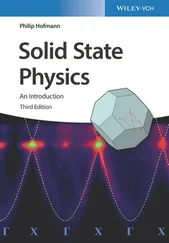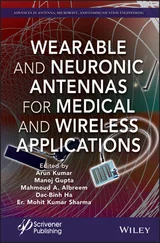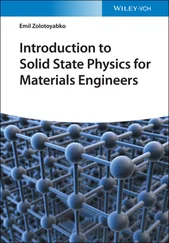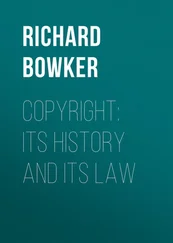1 Cover
2 Title Page Solid State Chemistry and its Applications Second Edition ANTHONY R. WEST Department of Materials Science and Engineering, University of Sheffield, UK
3 Copyright Page
4 Dedication Page
5 Preface
6 Companion Website
7 Biography
8 Solid State Chemistry, an Overview of the Discipline: Chemistry – Solid State Chemistry – Materials Chemistry – Materials Science and Engineering
9 1 Crystal Structures, Crystal Chemistry, Symmetry and Space Groups 1.1 Unit Cells and Crystal Systems 1.2 Symmetry 1.3 Symmetry and Choice of Unit Cell 1.4 Lattice, Bravais Lattice 1.5 Lattice Planes and Miller Indices 1.6 Indices of Directions 1.7 d ‐Spacing Formulae 1.8 Crystal Densities and Unit Cell Contents 1.9 Description of Crystal Structures 1.10 Close Packed Structures – Cubic and Hexagonal Close Packing 1.11 Relationship Between Cubic Close Packed and Face Centred Cubic 1.12 Hexagonal Unit Cell and Close Packing 1.13 Density of Close Packed Structures 1.14 Unit Cell Projections and Atomic Coordinates 1.15 Materials that can be Described as Close Packed 1.16 Structures Built of Space‐Filling Polyhedra 1.17 Some Important Structure Types 1.18 Point Groups and Space Groups
10 2 Crystal Defects, Non‐stoichiometry and Solid Solutions2.1 Perfect and Imperfect Crystals 2.2 Types of Defect: Point Defects 2.3 Solid Solutions of Ionic Materials 2.4 Extended Defects 2.5 Dislocations and Mechanical Properties of Solids
11 3 Bonding in Solids3.1 Overview: Ionic, Covalent, Metallic, van der Waals and Hydrogen Bonding in Solids 3.2 Ionic Bonding 3.3 Covalent Bonding 3.4 Metallic Bonding and Band Theory 3.5 Bands or Bonds: A Final Comment
12 4 Synthesis, Processing and Fabrication Methods4.1 General Observations 4.2 Solid State Reaction or Shake ‘n Bake Methods 4.3 Low Temperature or Chimie Douce Methods 4.4 Gas‐Phase Methods 4.5 High‐Pressure Methods 4.6 Crystal Growth
13 5 Crystallography and Diffraction Techniques5.1 General Comments: Molecular and Non‐Molecular Solids 5.2 Characterisation of Solids 5.3 X‐Ray Diffraction 5.4 Electron Diffraction 5.5 Neutron Diffraction 5.6 The Reciprocal Lattice 5.7 Total scattering and pair distribution function (PDF) analysis 5.8 Line broadening of XRD powder patterns, domain (particle) size measurement and strain effects
14 6 Other Characterisation Techniques: Microscopy, Spectroscopy, Thermal Analysis 6.1 Diffraction and Microscopic Techniques: What Do They Have in Common? 6.2 Optical and Electron Microscopy Techniques 6.3 Spectroscopic Techniques 6.4 Thermal Analysis (TA) 6.5 Strategy to Identify, Analyse and Characterise ‘Unknown’ Solids
15 7 Phase Diagrams and Their Interpretation 7.1 The Phase Rule, the Condensed Phase Rule and Some Definitions 7.2 One‐Component Systems 7.3 Two‐Component Condensed Systems 7.4 Some Tips and Guidelines for Constructing Binary Phase Diagrams 7.5 Ternary Systems 7.6 Phase Transitions
16 8 Electrical Properties8.1 Survey of Electrical Properties and Electrical Materials 8.2 Metallic Conductivity 8.3 Superconductivity 8.4 Semiconductivity 8.5 Ionic Conductivity 8.6 Dielectric Materials 8.7 Ferroelectrics 8.8 Pyroelectrics 8.9 Piezoelectrics 8.10 Applications of Ferro‐, Pyro‐ and Piezoelectrics
17 9 Magnetic Properties9.1 Physical Properties 9.2 Magnetic Materials, their Structures and Properties 9.3 Applications: Structure–Property Relations 9.4 Recent Developments
18 10 Optical Properties: Luminescence, Lasers and Transparent Conductors10.1 Visible Light and the Electromagnetic Spectrum 10.2 Sources of Light, Thermal Sources, Black Body Radiation and Electronic Transitions 10.3 Scattering Processes: Reflection, Diffraction and Interference 10.4 Luminescence and Phosphors 10.5 Configurational Coordinate Model 10.6 Some Phosphor Materials 10.7 Anti‐Stokes Phosphors 10.8 Stimulated Emission, Amplification of Light and Lasers 10.9 Photodetectors 10.10 Fibre‐Optics 10.11 Solar Cells and Photovoltaics 10.12 Transparent Conducting Oxides, TCOs, Smart Windows and Energy Management of Buildings 10.13 Photonic Crystals, Photonic Bandgaps and Opals
19 11 Heterogeneous Materials, Electroceramics and Impedance Spectroscopy 11.1 Homogeneous and Heterogeneous Solids 11.2 Resistivities and Permittivities of Materials; The Parallel RC Element 11.3 Impedance Formalisms, Alternating Currents and Equivalent Circuits 11.4 Applications of Impedance Spectroscopy
20 12 Thermal and Thermoelectric Properties12.1 Thermoelectric Effects 12.2 Thermal Properties: Heat Capacity, Thermal Conductivity, Thermal Expansion
21 13 Functional Materials: Some Important Examples 13.1 TiO 2: Rutile, Anatase and Other Ti–O Phases 13.2 Ca 12Al 14O 33 ,Mayenite: An Oxide Ion Conductor, Component of Cement and a Superconducting Electride 13.3 Zinc Oxide, ZnO for Varistor and Optoelectronic Applications 13.4 Two‐dimensional Structures: MXenes 13.5 Low‐dimensional Solids: Graphene, BN, Transition Metal Dichalcogenides and Black Phosphorus
22 14 Glass 14.1 Factors That Influence Glass Formation 14.2 Thermodynamics of Glass Formation; the Behaviour of Liquids on Cooling 14.3 Kinetics of Crystallisation and Glass Formation 14.4 Structure of Glasses 14.5 Liquid Immiscibility and Phase Separation in Glasses 14.6 Viscosity of Glasses and Melts 14.7 Electrical (Ionic) Conductivity of Glass and the Mixed Alkali Effect 14.8 Bonds, Bands and Semiconducting Glasses 14.9 Mechanical Properties and Strengthening of Glass 14.10 Commercial Silicate and Borate Glasses 14.11 Metallic Glasses 14.12 Fluoride Glasses 14.13 Glass‐Ceramics 14.14 Bioglasses
23 15 Structural Materials: Cement, Refractories and Structural Ceramics15.1 Cements 15.2 Refractories and Structural Ceramics
24 16 Oxides of the Elements, Their Properties and Uses 16.1 Oxides of s‐Block Elements 16.2 Acid‐Base Classification of Oxides 16.3 Oxides of p ‐Block Elements 16.4 Oxides of d‐block (Transition) Elements 16.5 Oxides of Lanthanides and Actinides 16.6 Oxides of the Elements Overview
25 Appendix A: Interplanar Spacings and Unit Cell Volumes
26 Appendix B: Model Building Equipment Needed Sphere Packing Arrangements
27 Appendix C: Geometrical Considerations in Crystal ChemistryNotes on the Geometry of Tetrahedra and Octahedra
28 Appendix D: The Elements and Some of Their Properties
29 Appendix E: The 32 Crystallographic Point Groups
30 Appendix F: The Arrhenius Equation for Ionic Conductivity Reference
31 Appendix G: A Guide to the Use of Electrode Potentials
32 Further Reading General Chapter 1 Chapter 2 Chapter 3 Chapter 4 Chapter 5 Chapter 6 Chapter 7 Chapter 8 Chapter 9 Chapter 10 Chapter 11 Chapter 12 Chapter 13 Chapter 14 Chapter 15 Chapter 16
33 QuestionsQuestions
34 Index
35 End User License Agreement
1 Chapter 1Table 1.1 The seven crystal systemsTable 1.2 Symmetry elementsTable 1.3 Structures, unit cell dimensions, and metallic radii of some comm... Table 1.4 Some close packed structuresTable 1.5 Some structures built of space‐filling polyhedraTable 1.6 The M–M distance between MX4 or MX6 groups sharing X atom(s)...Table 1.7 Two ways to describe the antifluorite structureTable 1.8 Some compounds with the NaCl structure, a/ÅTable 1.9 Some compounds with the zinc blende (sphalerite) structure, a/Å...Table 1.10 Some compounds with fluorite or antifluorite structure, a/Å...Table 1.11 Calculation of interatomic distances in some simple structuresTable 1.12 Some compounds with the wurtzite structure
Читать дальше
